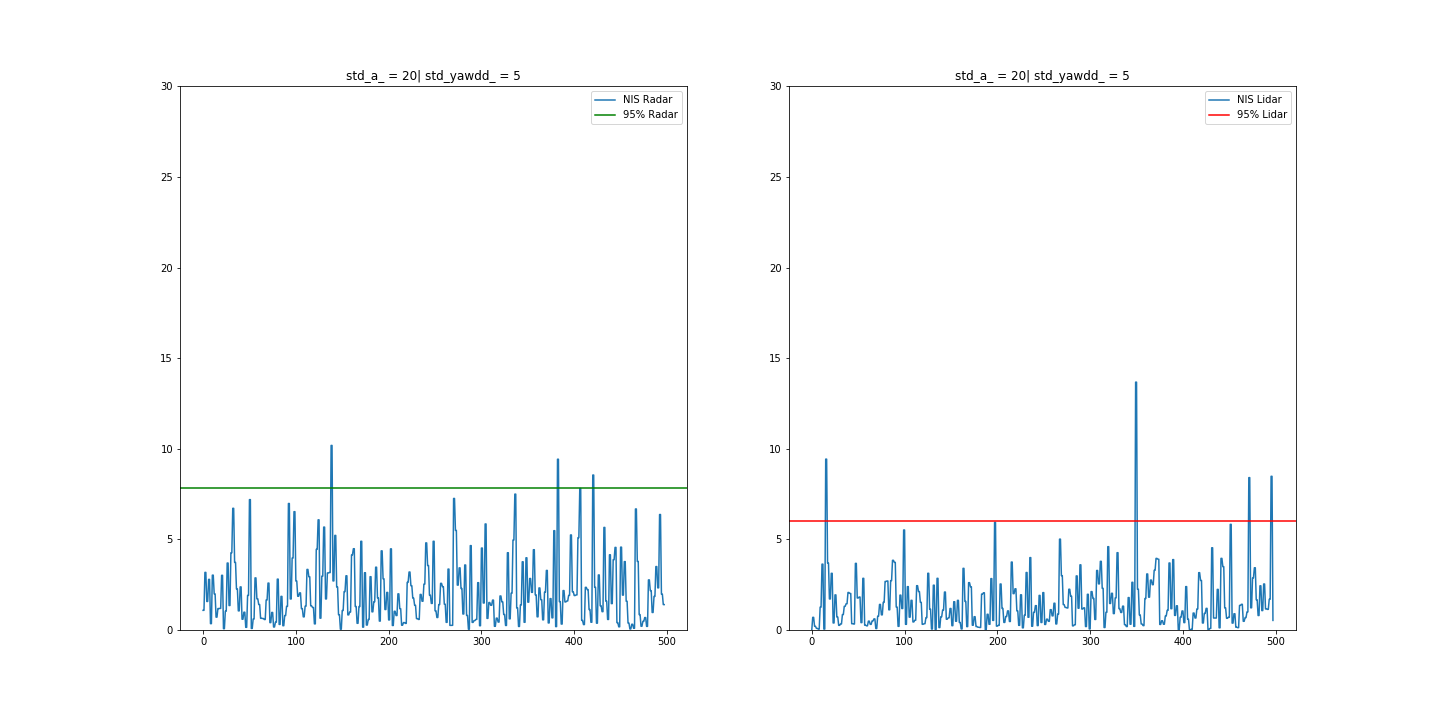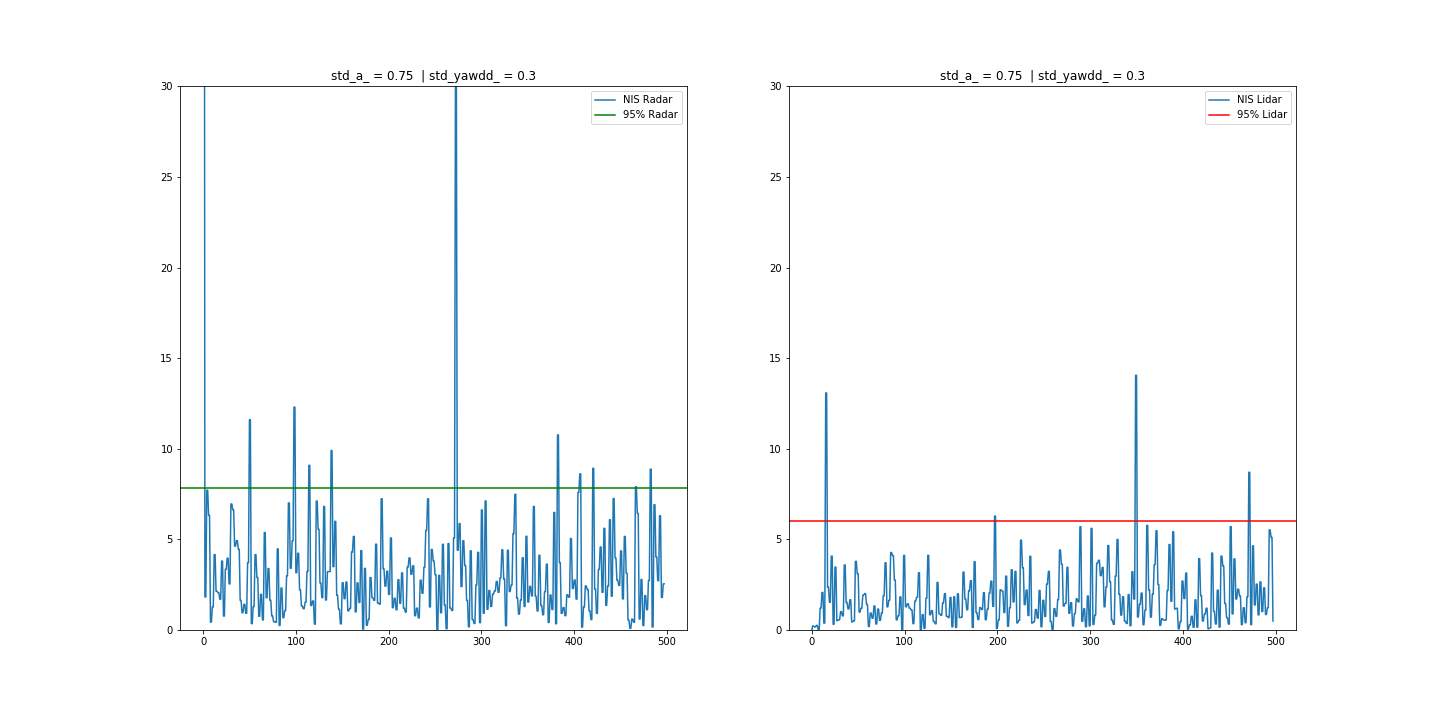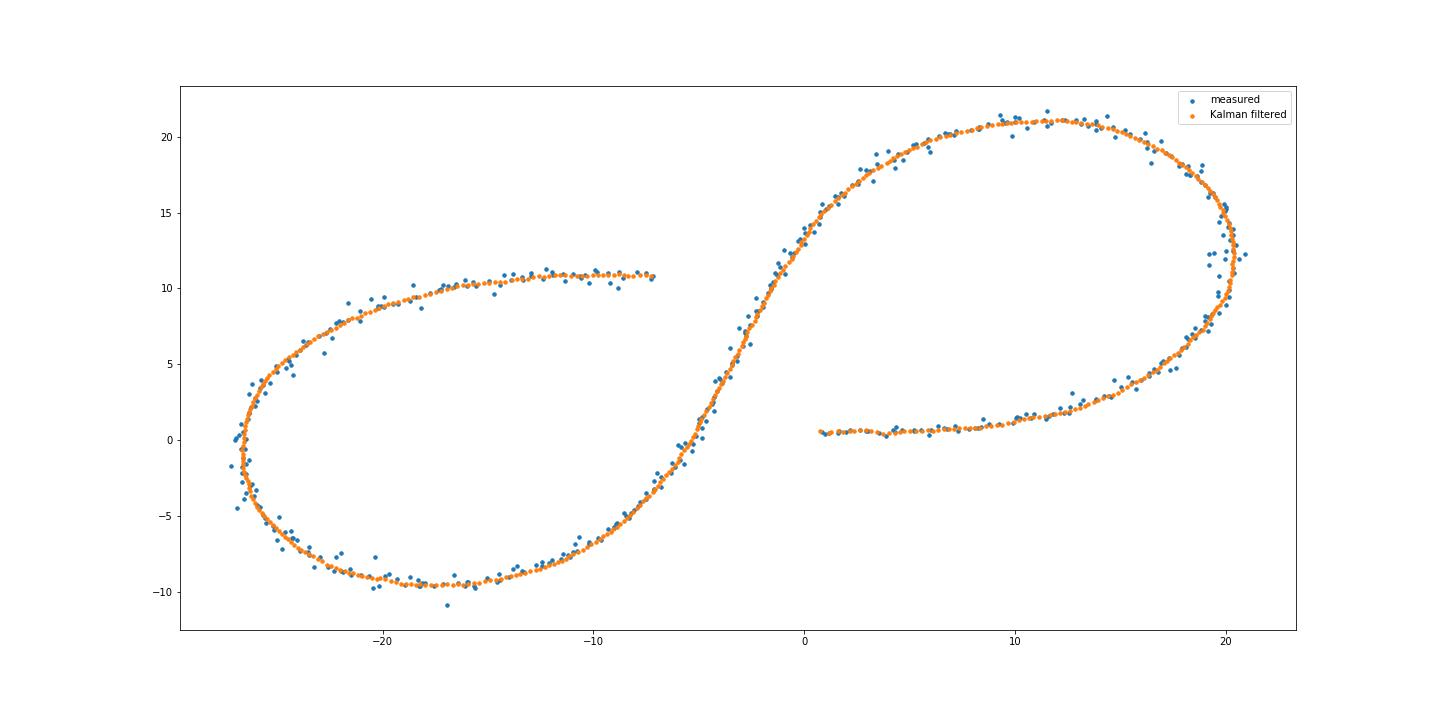In this project we will utilize a Unscented Kalman Filter [UKF] to estimate the state of a moving object of interest with noisy lidar and radar measurements. It's similiar to the project "Extended Kalman Filter"
This project includes the implementation of an Unscented Kalman filter with C++. A Udacity-provided simulator (available for download here) generates noisy RADAR and LIDAR measurements of an object's position and speed, and the UKF must merge these measurements to predict the object's position. Communication between the simulator and the EKF takes place via uWebSocket.
Udacity's project basis can be found here.
- cmake >= 3.5
- make >= 4.1
- gcc/g++ >= 5.4
- Udacity's simulator
For instructions on how to install these components on different operating systems, visit Udacity's project.
These are the suggested steps for Windows setup:
- Follow these instructions for setting up Ubuntu BASH.
- Download Windows simulator here.
- Open Ubuntu Bash (write following commands to Ubuntu Bash command window)
sudo apt-get updatesudo apt-get install gitsudo apt-get install cmakesudo apt-get install gccsudo apt-get install g++sudo apt-get install opensslsudo apt-get install libssl-dev- navigate to where you want to clone this repository to, for example:
cd /mnt/c/Users/Bob git clone https://github.com/autonomobil/SDCND-P7_Unscented-Kalman-Filtersudo rm /usr/lib/libuWS.so- navigate to project folder:
cd SDCND-P7_Unscented-Kalman-Filter ./install-ubuntu.shmkdir build && cd buildcmake .. && make- Launch the term2_sim.exe from Windows simulator folder
- Execute
./UnscentedKF - If you see
Listening to port 4567 Connected!!!, it is working - Press Start
These files were modified compared to the original repository:
- src/ukf.cpp
- src/ukf.h
- src/tools.cpp
An output data filedata_out.txt will be created in ./build, which consists of 'px_meas','py_meas','NIS_radar', 'NIS_laser', 'px', 'py'.
There is also a python routine (UKF_Visualizer.ipynb) implemented to show measured and predicted points, as well as NIST values to tune the process noise std_a and std_yawdd. These were tuned to std_a = 0.75 and std_yawdd = 0.3.
Not so good NIST values:
 Better NIST values:
Better NIST values:

- The code compiles without errors on my setup following the instructions above.
px, py, vx, vy output coordinates must have an RMSE <= [.09, .10, .40, .30] when using the file: "obj_pose-laser-radar-synthetic-input.txt" which is the same data file the simulator uses for Dataset 1.
-
Dataset 1 RMSE :
- [0.0733, 0.0811, 0.1768, 0.1665] with initializing
x_(2) = 5;- doesn't work if you start in a different direction; dataset 2:
x_(2)would have to be-5
- doesn't work if you start in a different direction; dataset 2:
- [0.0681, 0.0838, 0.3388, 0.2246] with initializing
if(radar) {x_(2) = sqrt(vx * vx + vy * vy);} else{x_(2) = 0;}(pseudo-code)- does work in all directions, so dataset 2 is possible
- [0.0733, 0.0811, 0.1768, 0.1665] with initializing
-
Dataset 2 RMSE : [0.0685, 0.0682, 0.4186, 0.2357]
- Sensor Fusion @ ./src/ukf.cpp
- ./src/ukf.cpp uses functions
Prediction,UpdateLidar,UpdateRadarandUpdate_x_P
- First measurement and initialization of x and P is handled in lines 100 - 151 ./src/ukf.cpp
- Prediction function: Lines 202 -287 ./src/ukf.cpp; function
Prediction - Update functions: Lines 307 - 440 ./src/ukf.cpp;
functions
UpdateLidar,UpdateRadarandUpdate_x_P
- In ./src/ukf.cpp if-statements decide how to initialize and process the data given the sensor type


